Modern tablets are very capable devices, combining great performance and features into a lightweight device that’s easy to carry around with you.
But if you already have a phone and a laptop, it can be hard to justify paying a premium for one of the very best tablets.
What you need is a cheap slate that can still handle all of the basics without letting you down, which is where this article comes in.
Almost all of the devices below cost under £300/$300 at launch (some have dropped in price since), yet offer a strong user experience in most key areas. But here at Tech Advisor, we didn’t want to leave out Apple entirely, so we’ve included the cheapest iPad that’s still available and worth buying.
Remember, while the 10 devices below are ranked, each has its own unique ‘Best’ award, so you might find that something lower down the list suits you best. At the bottom of the page, you’ll also find detailed buying advice.
Best budget tablets 2025
1. Samsung Galaxy Tab A9 – Best Budget Tablet Overall
Pros
- Slick, compact design
- Solid performance
- Impressive display
- Great value for money
Cons
- Slow charging
- Disappointing cameras
- Blurry scrolling at times
- Not available in the US
If you’re on a budget or just need a cheap tablet, there’s no better option than the Galaxy Tab A9.
It costs just £169 in the UK, yet it offers everything most people need from a cheap slate. That includes solid everyday performance, an attractive 8.7-inch display and solid battery life. With a design that could easily pass for a device twice the price and Samsung’s intuitive One UI software over Android, there’s a lot to like here.
However, it’s not all good news. The charging speeds and cameras both need work, while scrolling can feel slow and produce a ghosting effect. There’s also no 5G support, but 4G will be absolutely fine for most people.
While not perfect, Samsung’s focus on getting the basics right means this is a tablet that’s easy to recommend. Provided you’re happy with Android, it’s the budget tablet to beat.
Read our full
Samsung Galaxy Tab A9 review
2. Apple iPad 10.2in (2021) – Best Budget iPad
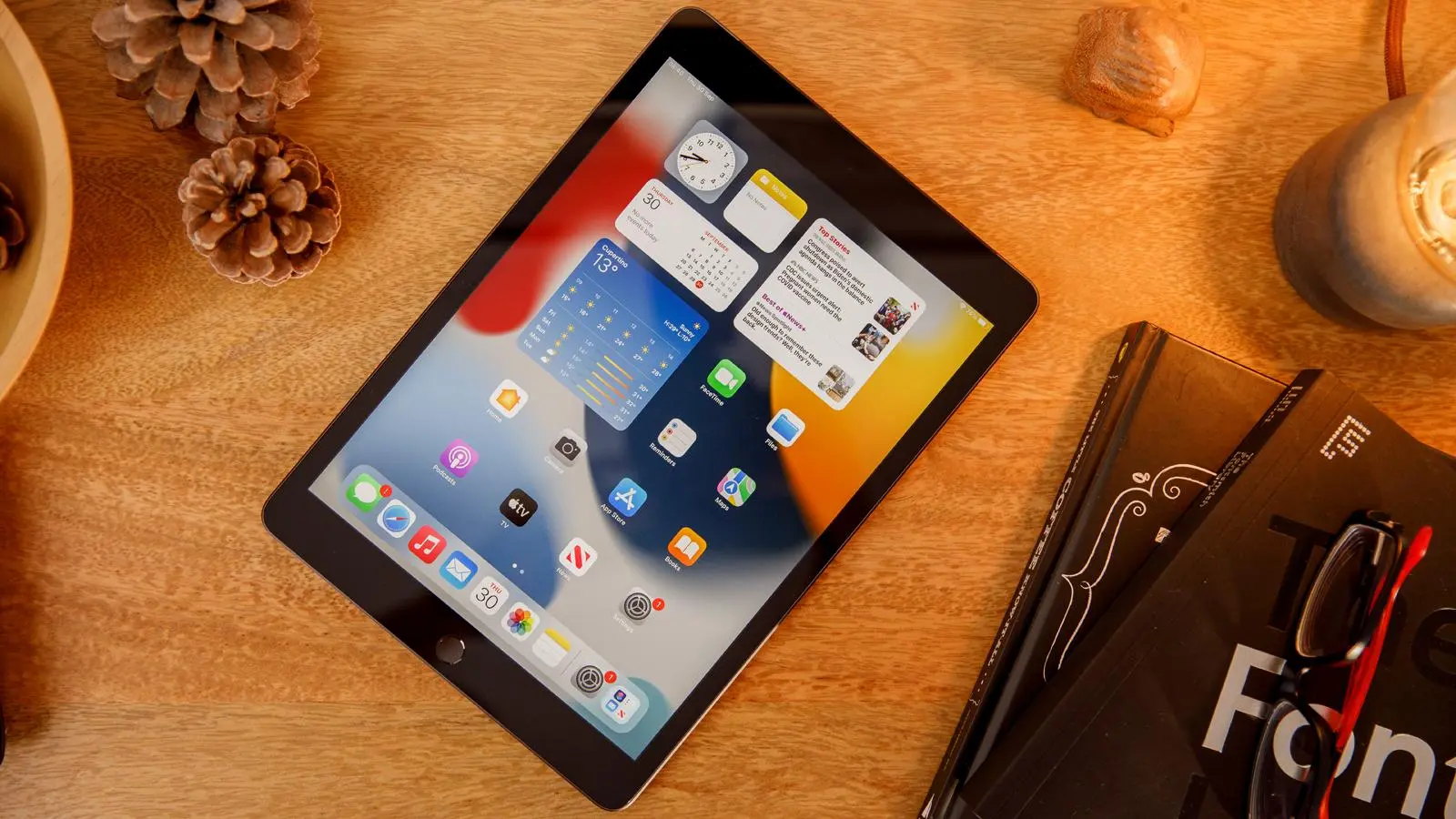
Pros
- Best selection of tablet-optimised apps
- Large, bright 10.2in display
- Support for Apple Pencil
Cons
- Dated design
- More expensive than other budget tablets
Price When Reviewed:
$329 (64GB) | $479 (256GB)
Best Prices Today:
The 9th-gen regular iPad was released back in 2021, but it remains a great tablet. And with discounts often bringing it under £300/$300, it’s still the best affordable Apple tablet you can buy.
The iPad experience is a premium one, no matter the model you opt for, with iPadOS offering a suite of tablet-focused features and functionality that make it easy to use, even if you’ve never used an iPad before. It also has the widest and highest-quality selection of tablet-optimised apps of all the devices here.
Even in 2024, Apple’s A13 Bionic is a capable chip that ensures the iPad can comfortably run the vast majority of apps on the App Store. The 10.2-inch display is a joy to use, especially with Apple’s True Tone tech (for automatically adjusting colour balance based on your environment) and support for the first-gen Apple Pencil.
So, yes, while the iPad is a more premium entry-level tablet than those from Amazon and Android manufacturers, it still boasts the best all-around experience of them all.
Read our full
Apple iPad 10.2in (2021) review
3. Xiaomi Redmi Pad SE – Excellent Android option
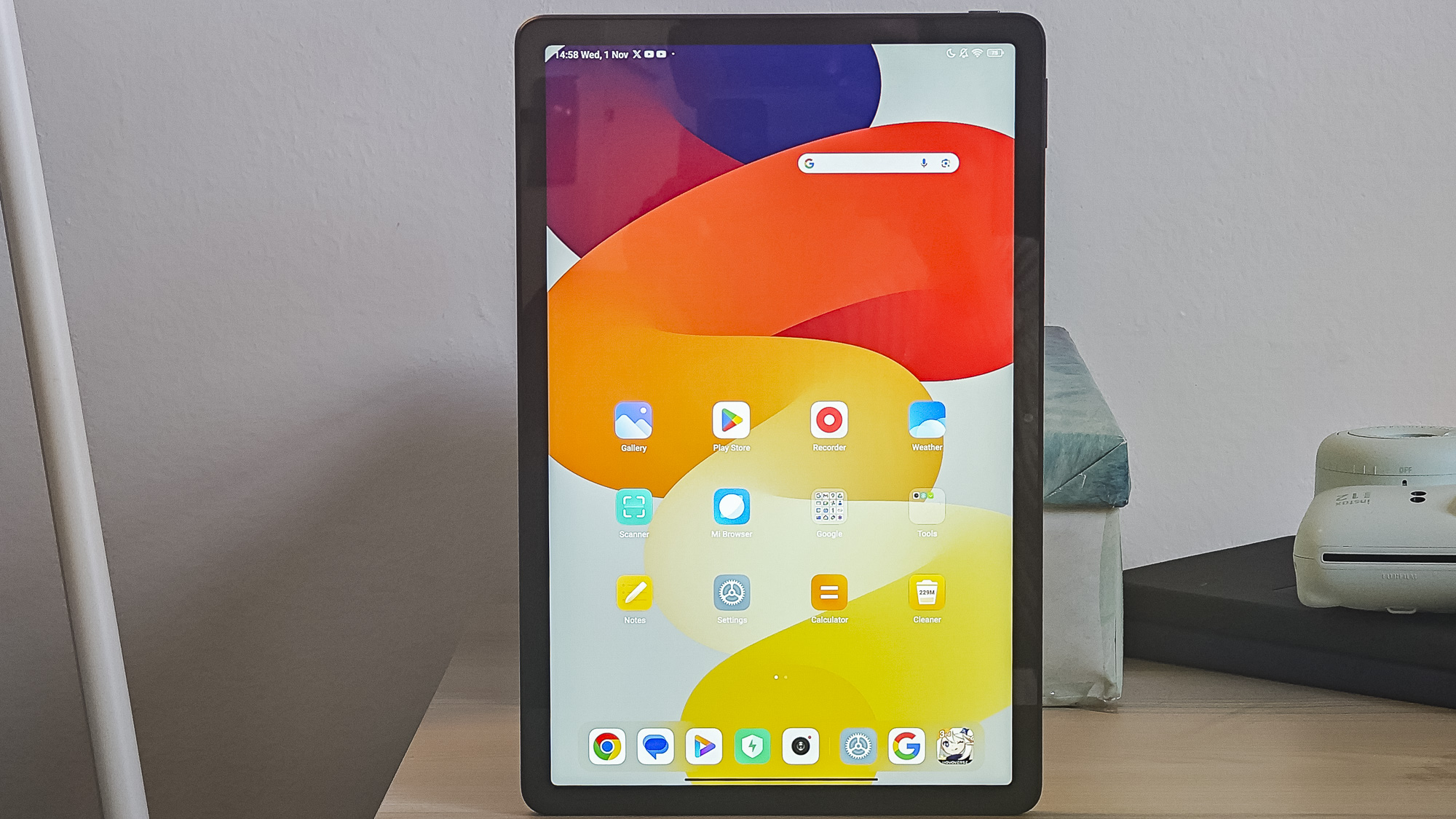
Pros
- Lightweight and refined design
- Excellent audio
- 90Hz display
- Great battery life
Cons
- Slow charging
- Only two major OS updates
- Some bloatware
- Not available in the US
For just £199, the Redmi Pad SE offers a very good all-around tablet experience.
That starts with the design, which looks the part and is clearly inspired by more expensive tablets. The 11-inch, Full HD LCD display also holds its own, especially with a 90Hz refresh rate.
Don’t expect amazing performance from the Snapdragon 680 chipset, but it is powerful enough to for day-to-day usage – even with just 4GB of RAM.
An already-generous 128GB of storage is expandable via microSD, while punchy audio and two-day battery life are both better than you might expect.
Inevitable compromises come in the form of slow charging, annoying additions to Xiaomi’s MIUI software and only two years of Android version updates. But with three years of security updates, it’s still easy to recommend.
Read our full
Xiaomi Redmi Pad SE review
4. Samsung Galaxy Tab A9+ – Great large tablet
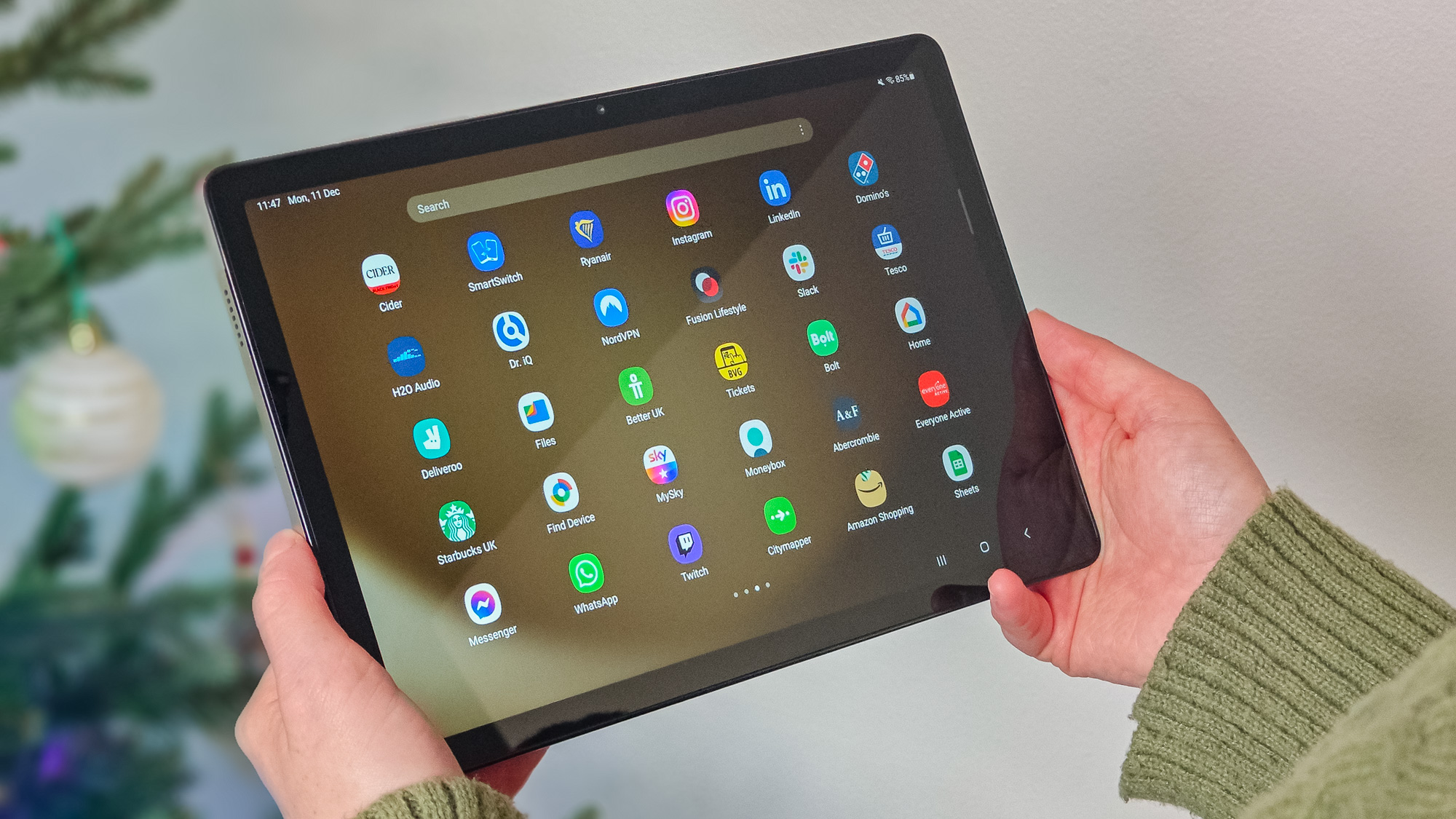
Pros
- Excellent performance
- Premium design
- Great quad speakers
- Intuitive software
Cons
- Slow charging
- Disappointing camera
- Underwhelming battery life
- Not available in the US
Samsung’s 2023 budget tablets were so good that we had to include both models. At £239, the Tab A9+ is significantly more expensive than the regular model, but introduces several upgrades.
The big one is the larger 11-inch display, which delivers great visuals and a 90Hz refresh rate. Performance from the Snapdragon 695 is a noticeable improvement, and it introduces 5G support. You also get the same slick design, impressive speakers and Samsung’s intuitive One UI skin over Android.
You also get a much larger battery than the regular Tab A9, but overall battery life is a little disappointing. The charging speeds and cameras could also be improved.
At this higher price point, those shortcomings are more significant. But there’s no doubt that the Tab A9+ is a great tablet that compares favourably to most of the competition.
Read our full
Samsung Galaxy Tab A9+ review
5. Lenovo Tab Plus – Best for entertainment
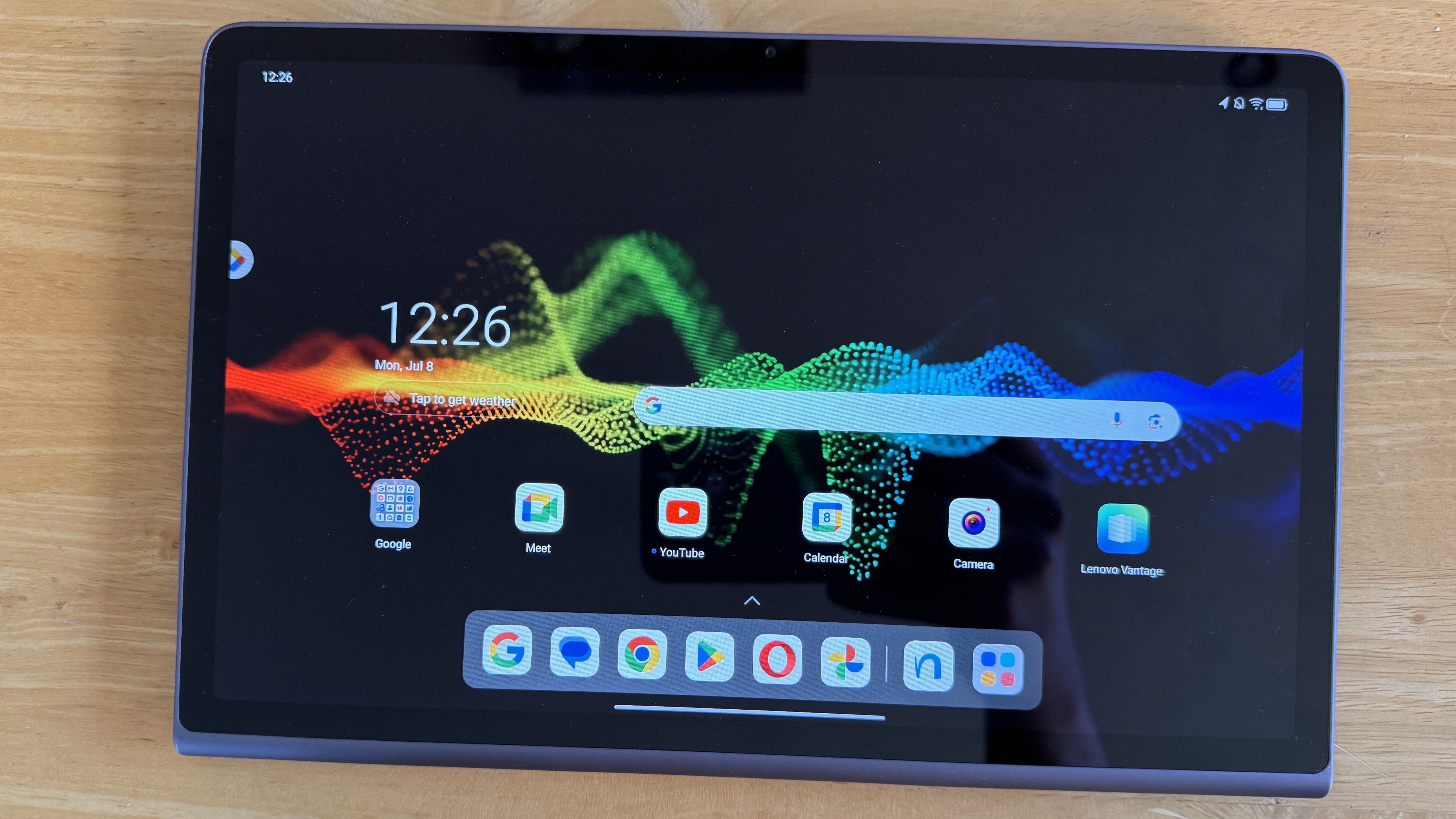
Pros
- Great screen and speakers
- Useful built-in kickstand
- Superb battery life
- Durable yet sleek design
Cons
- Underwhelming performance
- Only two major OS updates
If you’re buying a budget tablet just for consuming content, as many people are, the Lenovo Tab Plus is a fine choice.
It excels at the fundamentals of a great video-watching experience, with a high-quality display (90H, FHD+, LCD) delivering rich colours and impressive brightness. It’s ably supported by eight JBL speakers, which deliver very solid audio across a range of scenarios.
Alongside a built-in kickstand for hands-free viewing and strong battery life, the appeal of the Tab Plus is there for all to see.
Unfortunately, the performance is compromised to the extent that it can’t go any higher in this list. And while general performance is good, software support is frustratingly limited.
Overall, the Lenovo Tab Plus is a compelling choice for entertainment, but best avoided if productivity or gaming are priorities for you.
Read our full
Lenovo Tab Plus review
6. Oppo Pad Air – Strong all-rounder
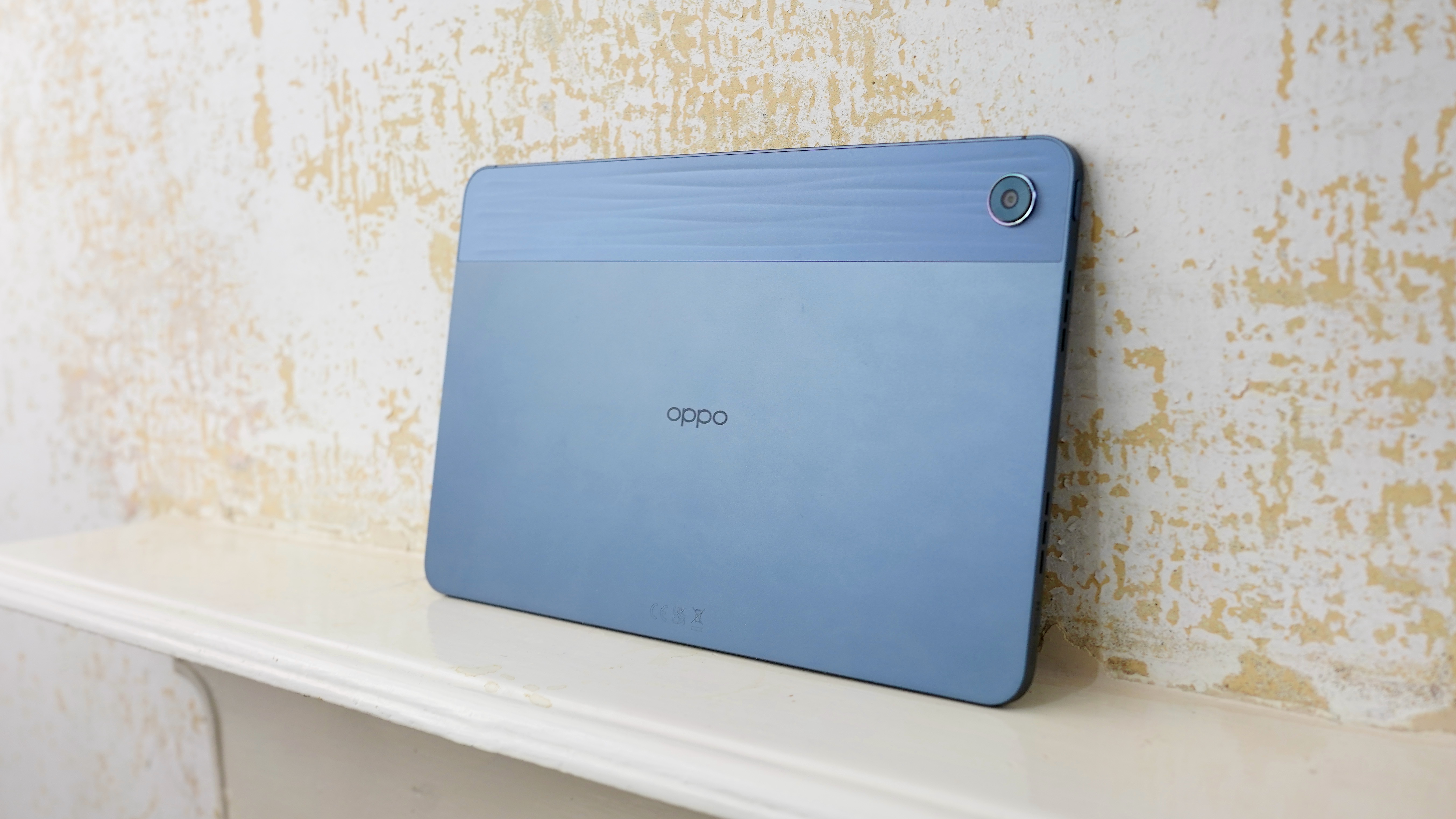
Pros
- Premium design
- Large, high-res display
- Decent performance
- Lightweight, sturdy build
Cons
- No fingerprint reader
- Only 60Hz refresh rate
- Middling camera performance
- Not available in the US
Price When Reviewed:
Not available in the US
The Oppo Pad Air isn’t a tablet that feels cheap in the hand, thanks to the combination of an all-metal body and angled edges reminiscent of premium models of iPad, though a textured plastic panel on the rear helps tell the two apart. It’s also lightweight as the Air branding suggests, weighing in at just 440g.
The 10.3-inch IPS LCD display sports an impressive 2000 x 1200 resolution, with vibrant colours and great viewing angles combined with quad-speakers making it ideal for watching content on the go. The only catch is that it’s capped at 60Hz. While that’s fairly regular for a budget tablet, it’s worth noting that many cheap slates now have high refresh rate screens.
Performance is in line with other budget options with a Snapdragon 680 processor, though it does perform well in benchmarks There’s also at least 64GB of storage to store your apps and games.
There are sacrifices to be made – the camera performance is middling, there’s no fingerprint reader and Oppo’s ColorOS isn’t the ideal UI for big-screen tablets – but if you’re looking at a decent all-rounder at an entry-level price, the Oppo Pad Air is a tempting option.
Read our full
Oppo Pad Air review
7. Nokia T21 – Best Android software
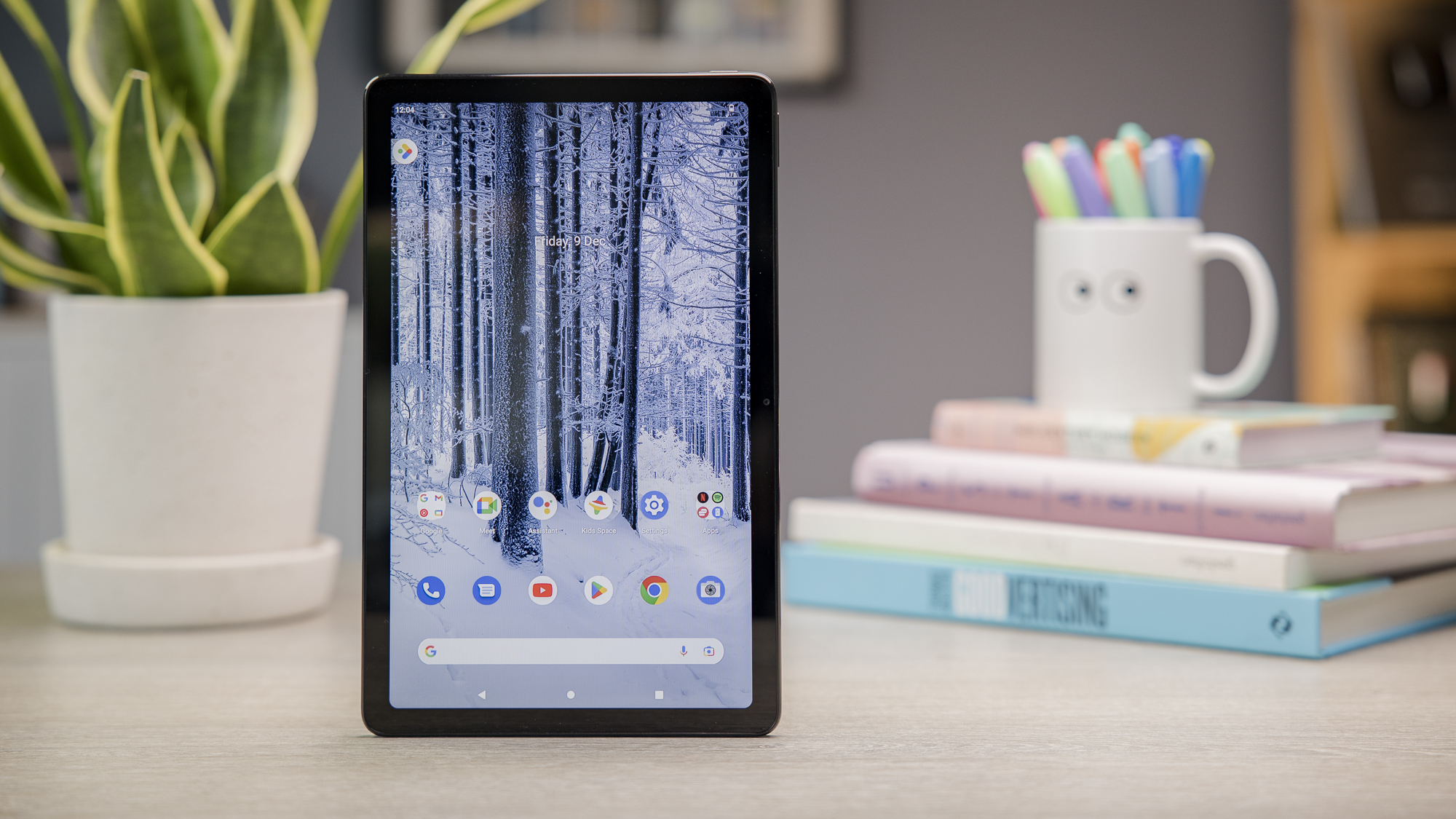
Pros
- Sharp & colourful screen
- Sleek design
- Long battery life
- Near-stock Android
Cons
- Middling performance
- Display dimmer than T20
- Charger not included
Price When Reviewed:
Not available in the US
If you’re looking for a cheap tablet with simple software, the Nokia T21 is an excellent choice. It’s running essentially stock Android with some useful additions including the ability to use the tablet as a second screen with Windows devices.
Once again, the 2K screen is impressive even if it is a little dimmer than the T20 and there’s a lot of good stuff for the asking price including solid battery life, a nice design and an LTE option for those that need data on the go.
The main issue here is that the Oppo Pad Air is only slightly more expensive with superior design and performance. But if slick software is your number one priority, the T21 is the way to go.
Read our full
Nokia T21 review
8. Amazon Fire HD 10 Kids Pro (2024) – Best for children
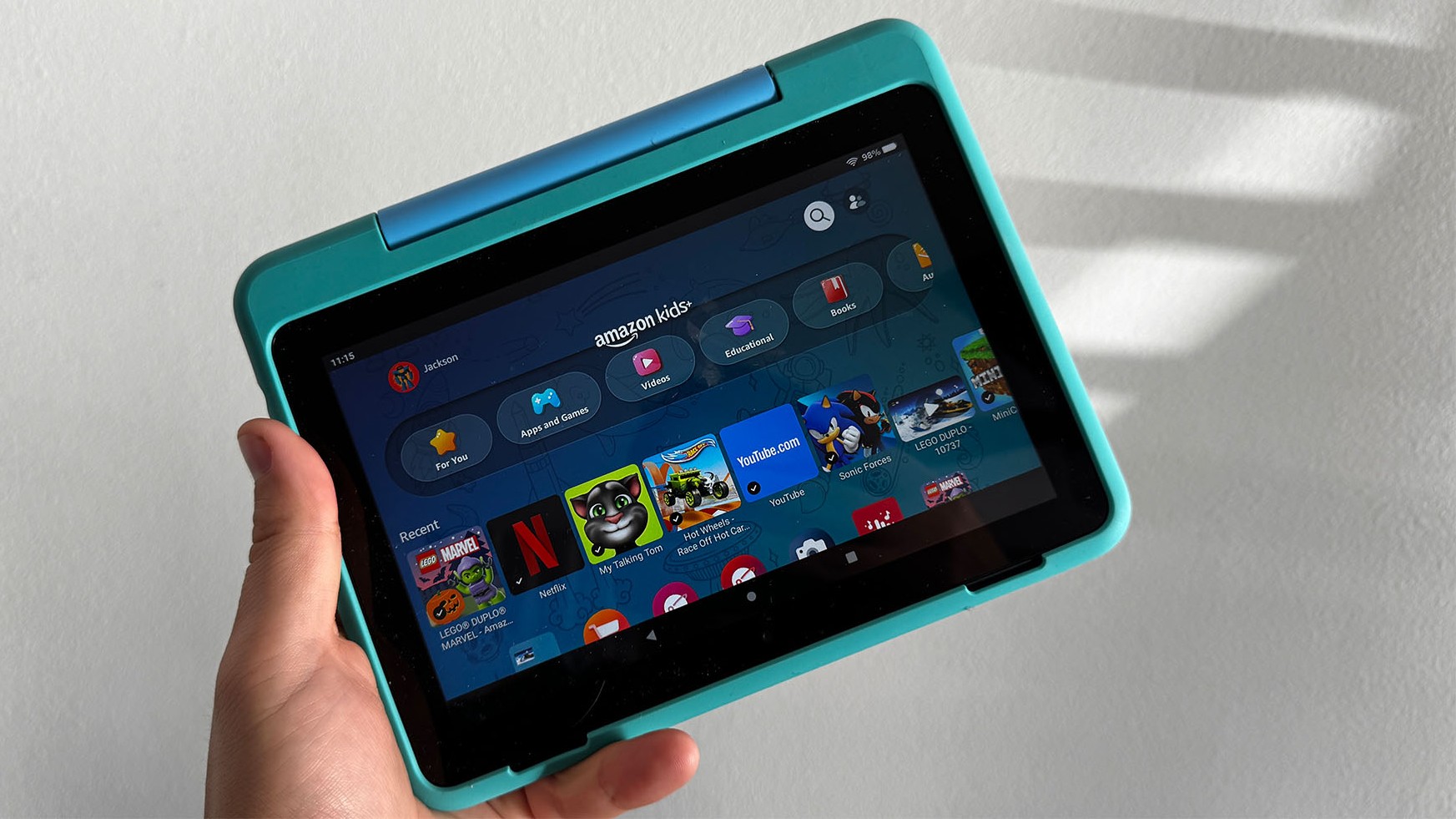
Pros
- Attractive, slim design
- Decent display
- Good child-friendly features
- Affordable price
Cons
- Poor performance
- Software takes some getting used to
- Disappointing cameras
Price When Reviewed:
From $149.99
The Fire HD 8 Kids Pro adds a few child-friendly features to the familiar Amazon Fire tablet experience.
These include a commitment to durability, with an included protective case (available in several designs) and a two-year replacement guarantee. On the device itself, you also get robust parental control features to keep an eye on what your child (it’s designed for ages 6-12) is up to and set limits.
However, to get the most out of it, you’ll need a subscription to Amazon Kids+, which offers access to a range of shows and games from the likes of Disney, Harry Potter, Marvel and Nickelodeon. After a free first year, it costs at least £4.99/$5.99 per month.
Elsewhere, all the usual Fire tablet limitations apply here, including a basic display, limited performance and a low-quality camera.
However, as you’re buying this for a young child, none of it matters too much. The Fire HD 8 Kids Pro performs well as a child-friendly tablet, which makes it easy to recommend.
Read our full
Amazon Fire HD 8 Kids Pro review
9. Amazon Fire HD 8 (2024) – Good value option
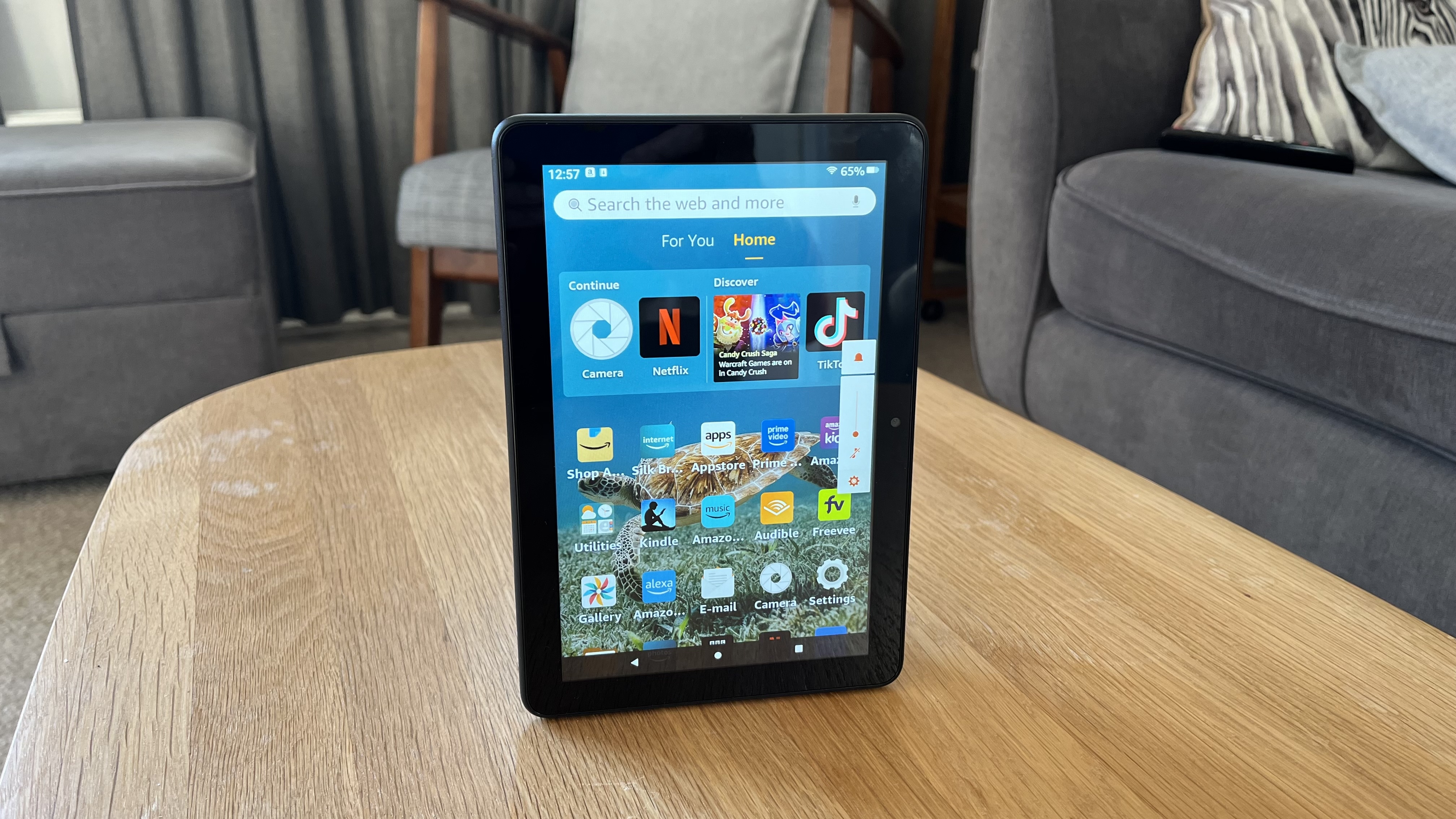
Pros
- Good battery life
- Handy Micro-SD slot
- Clean design
- Compact and comfortable
Cons
- Limited performance
- Nearly unusable camera
Price When Reviewed:
From $99.99 | From £114.99 without ads
When you buy a Fire tablet, you have to be aware of the compromises that come with it. When it comes to the latest Fire HD 8, that’s the basic performance and a rear camera you should pretty much never use, plus the usual limited app selection from the Amazon Appstore.
However, as a device for the basics, there are reasons to recommend it. The 8-inch display is decent for the price, battery life is strong, and the storage (starting at 32GB) can easily be expanded via a Micro-SD card.
It makes the Fire HD 8 an ideal device for watching TV and movies, casual gaming and reading e-books – especially via Amazon’s Kindle app. The software experience is also fairly user-friendly, though I’d highly recommend paying the extra £10/$15 to remove ads.
Another positive is the compact, lightweight design, which means you can take the Fire HD 8 almost anywhere with you.
Read our full
Amazon Fire HD 8 (2024) review
10. Amazon Fire Max 11 – Affordable productivity option

Pros
- Nice screen
- Optional keyboard and stylus
- Great handwriting recognition
- Good performance
Cons
- Limited apps
- No Google
- Only 64GB base storage
Price When Reviewed:
From $229.99
It might be the most expensive tablet Amazon makes, but it’s still very affordable and within the price cap we set for budget tablets. Though that changes if you want to add the keyboard case that’s sold separately.
The stylus is also an extra purchase but delivers a realistic pen experience with very good handwriting recognition. You will have to deal with 64GB of storage unless you spend more and the usual caveat of not having access to the Google Play Store, though.
However, those primarily using Amazon services will get on just fine – the Max 11 offers a nice 2K screen, solid performance and decent battery life.
Read our full
Amazon Fire Max 11 review
Why you should trust Tech Advisor
Tablet reviews and buying advice have been a staple of Tech Advisor’s coverage since the original iPad and Samsung Galaxy Tab arrived in 2010.
We’ve seen tablet makers scramble to offer the biggest, brightest, highest-resolution, fastest-refreshing, toughest, displays; we’ve seen an arms race in processors and graphics in the quest for the ultimate portable performance; continued improvements to accessories and software to make for the best possible productivity experience; a push for batteries that can go – never mind all day – but all week; and new technologies that enable water resistance and vastly improve audio performance.
We’ve held your hand through a fascinating journey of tablet hardware, and today, some 15 years later, it’s the software smarts and once impossible-to-imagine AI capabilities that glue us to this path. We perform in-depth, real-world testing on every new tablet that’s worth buying, including budget devices. We integrate them into our daily lives for the most authentic experience possible and make sure we are in a position to give you the best possible buying advice.
Budget tablet buying guide
What screen size do I need?
That depends on what you’re planning to use it for. If portability is a top priority, consider something around 8 to 9 inches, which means it should be light enough to take anywhere with you.
For mainly at-home usage, consider something bigger. At least 10 inches will ensure there’s plenty of room for full-size video or video calling that everyone can comfortably see.
But if you’re planning on using a tablet for serious work, an even larger screen will probably suit you better. Above 12 inches means it’s a comparable size to many laptops and makes it capable of genuine multitasking.
Look for an IPS screen (or better yet, an OLED screen), as this technology is almost guaranteed to offer superior colours and viewing angles versus a basic TN display. IPS panels usually offer decent brightness and contrast, too.
Resolution isn’t as important as you might think. Pixel density is a better guide: you need fewer pixels on a smaller screen and vice versa. Look for at least 220 pixels per inch (often abbreviated to ‘dpi’) to keep things looking crisp.
How much storage do I need?
Most budget tablets have limited storage, though some offer the flexibility of expansion via a Micro-SD card. Make sure you check this before you buy.
Without it, you’ll want 64GB as a bare minimum. Most people will be better off with either 128- or 256GB, with 512GB and higher reserved for people who store a lot of files locally.
Just remember, a few GB of that storage is taken up by important system files that can’t be deleted, so the actual usable total will be slightly less.
How good do the cameras need to be?
For most tablet manufacturers, rear cameras simply aren’t a priority. People aren’t going to be going around taking photos like they would with a smartphone – instead, you really just want something for document scanning and the occasional quick snap.
However, some budget tablets don’t even ensure that, so it’s worth checking.
The front-facing lens is much more important, given its use for video calling. While a higher megapixel count is often better, try to also find a sensor that can capture video at Full HD (1080p) or higher, which will ensure crisp footage.
For more guidance, we have a section on the cameras in each of our tablet reviews.
Which processor should I look for?
Flagship processors such as the Qualcomm Snapdragon 8 Elite and MediaTek Dimensity 9400 are generally the most capable, but you won’t find those on budget tablets.
Instead, for each device you’re considering, look at which other phones or tablets are already using it. If it’s new, see where it sits within the company’s lineup – if it’s the least powerful it makes, there may be cause for concern.
In general, it’s best to look for a processor made by either Qualcomm, MediaTek, Google or Apple, which are known to be generally reliable.
But don’t pay too much attention to clock speeds (in GHz) or even RAM. It’s easy to be fooled into believing a tablet will (or won’t) perform well, based on numbers alone.
Read our reviews to find out how each tablet handles in the real world.
What tablet software is best?
Across the 10 devices in this article, three different operating systems are used.
The most popular is Android, and there are lots of budget Android tablets to choose from. However, each manufacturer offers a slightly different take on Android, so it’s worth researching these to see which one you prefer.
Also, the fact that a tablet is running Android doesn’t automatically make it good. There are plenty of relatively unknown brands out there which offer a sub-par experience, though we generally avoid reviewing those.
While based on Android, Amazon’s Fire OS is fundamentally different. It’s a much simpler software that’s built around Amazon’s own apps. Plenty of third-party apps are available, but the Amazon Appstore has a fraction of the selection on the Google Play Store.
Last, but very much not least, is iPadOS. It’s only available on Apple’s iPad, though there are only minor tweaks compared to iOS, which runs on the iPhone. iPadOS uses Apple’s own App Store instead and is the best option if you’re invested in the Apple ecosystem.
But if you can do without the likes of iMessage and FaceTime, Android generally has the upper hand when it comes to budget tablets




































